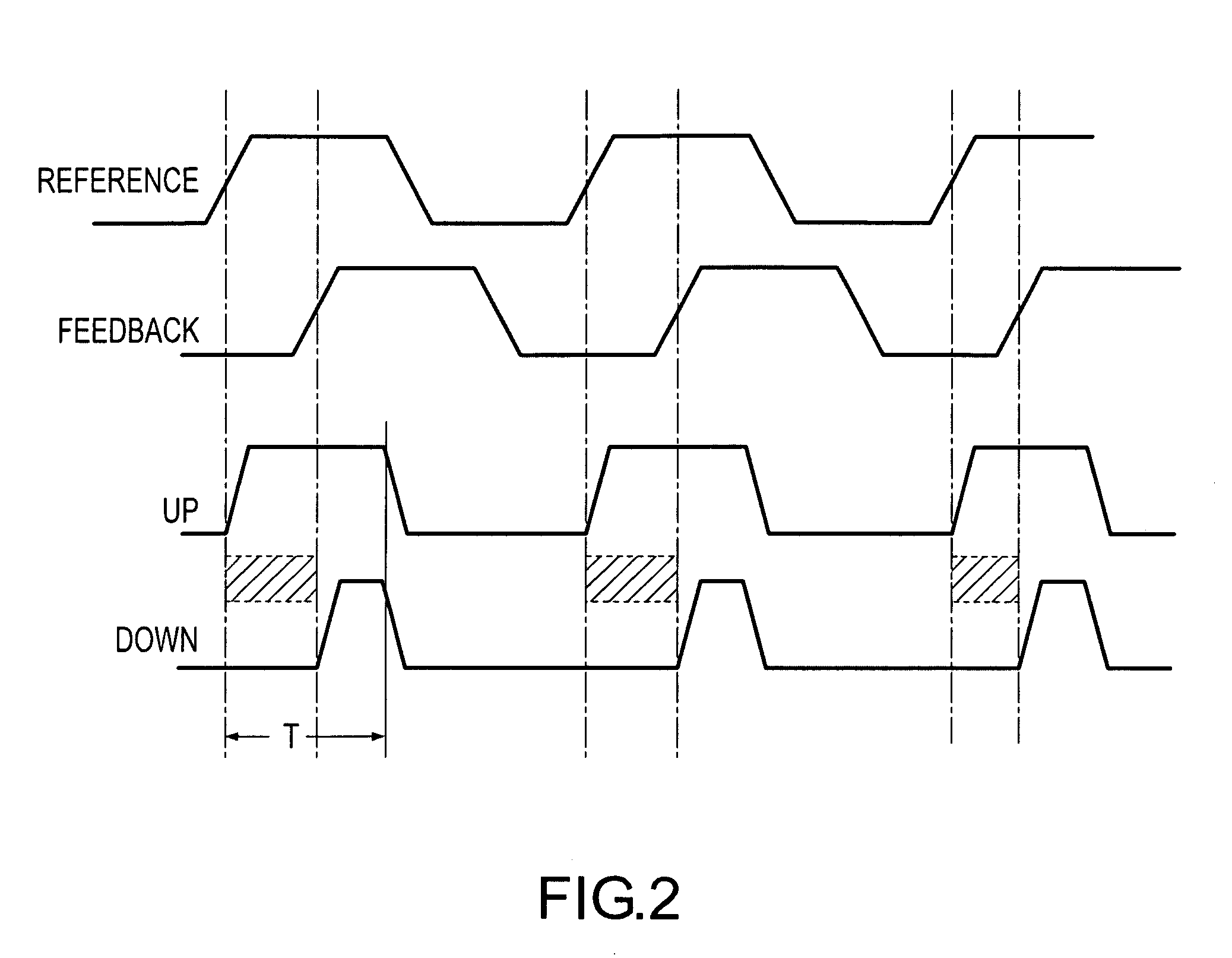Phase detector and method providing rapid locking of delay-lock loops
a delay-locking loop and phase detector technology, applied in pulse generators, pulse techniques, digital transmission, etc., can solve the problems of time required, maintenance of permanent phase error between ssub>fb and fixed phase error, and disadvantage of allowing fixed phase error, so as to achieve the effect of quick locking condition
- Summary
- Abstract
- Description
- Claims
- Application Information
AI Technical Summary
Benefits of technology
Problems solved by technology
Method used
Image
Examples
Embodiment Construction
[0024]A delay-lock loop 40 according to one example of the present invention is shown in FIG. 5. The delay-lock loop 40 uses the same charge pump 16, capacitor 18 and VCDL 20 that are used in the delay-lock loop 10 of FIG. 1. These components operate in essentially the same manner in both loops 10, 40. Therefore, in the interests of brevity and clarity, an explanation of their function and operation will not be repeated.
[0025]The delay-lock loop 40 differs from the delay-lock loop 10 of FIG. 1 in the use of a dual mode phase detector 50. The phase detector 50 includes both a single edge phase detector 54, which operates as shown in FIG. 2, and a dual edge phase detector 56, which operates as shown in FIGS. 3 and 4. Both of the phase detectors 54, 56 receive the reference signal SR and the feedback signal SFB, and they generate the “Up” and “Down” signals in response. The “Up” and “Down” signals are applied to respective inputs of a switch 58. The switch 58 selects the “Up” and “Down...
PUM
 Login to View More
Login to View More Abstract
Description
Claims
Application Information
 Login to View More
Login to View More - R&D
- Intellectual Property
- Life Sciences
- Materials
- Tech Scout
- Unparalleled Data Quality
- Higher Quality Content
- 60% Fewer Hallucinations
Browse by: Latest US Patents, China's latest patents, Technical Efficacy Thesaurus, Application Domain, Technology Topic, Popular Technical Reports.
© 2025 PatSnap. All rights reserved.Legal|Privacy policy|Modern Slavery Act Transparency Statement|Sitemap|About US| Contact US: help@patsnap.com



